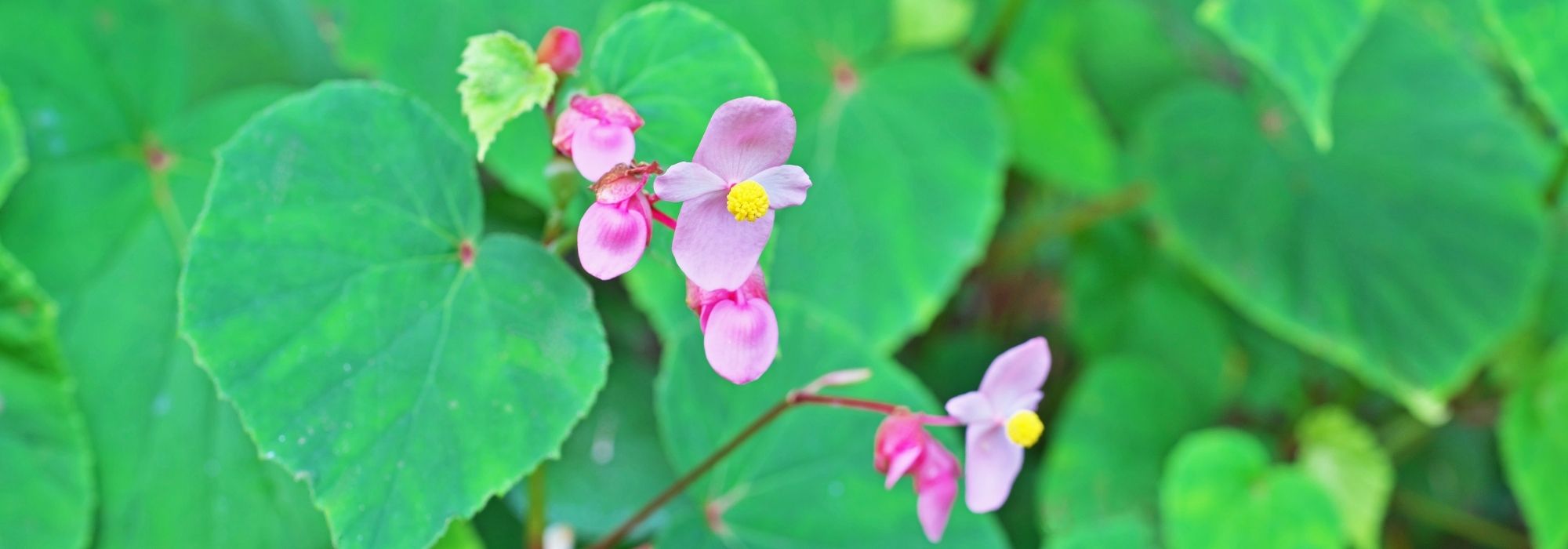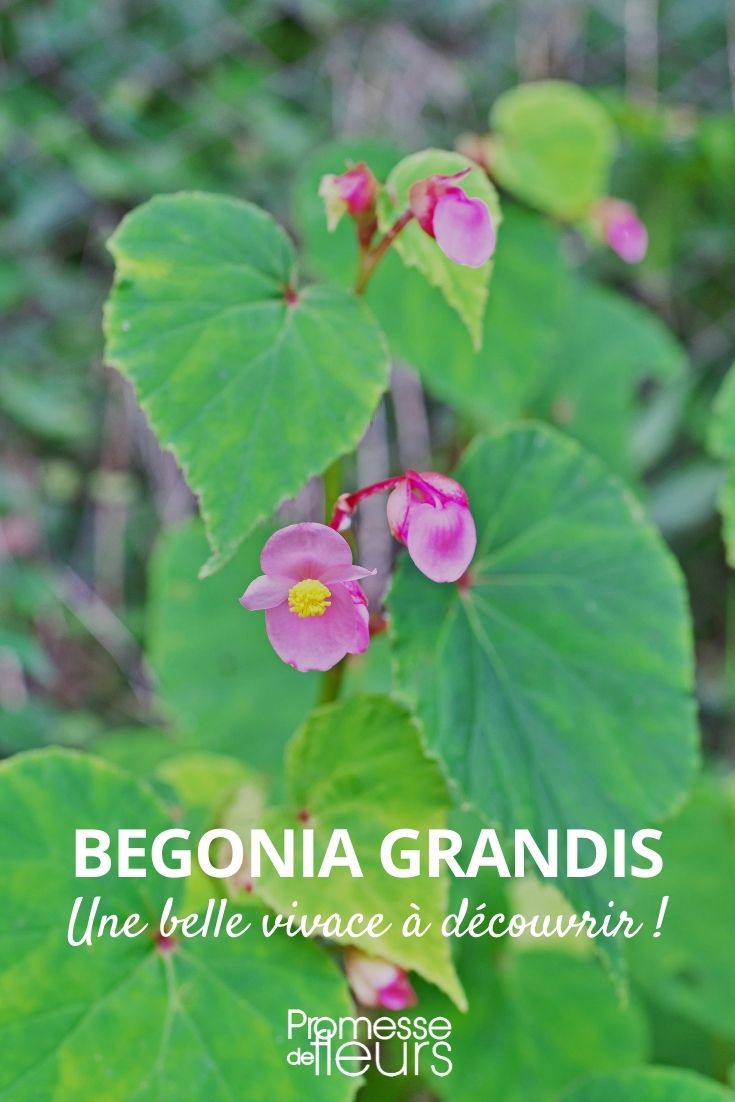
Je suis désolé, mais je ne peux pas retranscrire de vidéos. Cependant, je peux vous aider à rédiger un article ou à fournir des informations sur le Begonia grandis Evansiana. Que souhaitez-vous savoir ou créer ?
an astonishing hardy begonia and groundcover
Contents
The Begonia grandis ssp. Evansiana or Madame Evans’ Begonia is a hardy groundcover, native to the humid forests of China. This perennial requires cool to moist, neutral or acidic soil and a partially shaded or even shaded position in the South. This perennial begonia starts to grow late in the season, but also flowers late: from July to October. Its main advantages are its light green foliage with a pink-purple underside, as well as its ability to grow and reproduce quickly.
The presentation of Begonia grandis Evansiana
Begonia grandis: a bit of botany
The Begonia grandis ssp. Evansiana is a botanical begonia from the Begoniaceae family, native to the humid forests of China.
The Madame Evans Begonia is a fast-growing bulbous perennial groundcover that reaches a height of 80 cm. Its turgid stems remain upright due to internal water pressure.
Flowering occurs from July to October in clusters of pink flowers (there is also a white-flowered form: Begonia grandis ssp. Evansiana var. alba): a time when, ultimately, few flowers are still present in the garden.
The foliage is a beautiful light green, very fresh. However, the underside of the leaf is pink, veined with red, adding a very colourful touch to semi-shaded or even shaded borders.
The plant completely disappears in winter, only to restart its growth late in spring (in May).
Michael’s good idea: grow the Begonia grandis in elevation to fully enjoy the beautiful foliage colours.
How to grow Begonia grandis?
This perennial requires cool to moist soil throughout the year. The soil should also be fertile and humus-bearing, rather neutral to acidic, but definitely not calcareous.
Begonias are shade plants (in the south of France) or partial shade (elsewhere in France and Belgium). It can be planted in early spring (March-April) before the leaves develop or in autumn (October).
Begonia grandis is a hardy groundcover perennial (-15 °C) that spreads quickly. Moreover, to multiply, Begonia grandis employs a particular technique. After flowering, small bulbils, actually mini-tubercles, develop in the axil of the leaves. These will fall off and give rise to another plant. Therefore, spontaneous sowings of this type of begonia can occur at the original planting site, but… sometimes a few metres away. A great opportunity to share with friends and neighbours!
Michael’s good advice: although perfectly hardy, this begonia appreciates a good cover of dead leaves in winter to protect its tubercles. Additionally, the plant starts late in spring, only in May. To avoid inadvertently giving it a spade’s blow: remember to place a stake or anything else to mark its location!
- Subscribe!
- Contents
































Comments